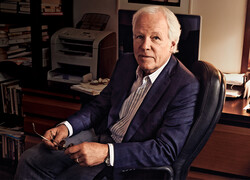Plus, receive recommendations and exclusive offers on all of your favorite books and authors from Simon & Schuster.
Leave the Gun, Take the Cannoli
The Epic Story of the Making of The Godfather
By Mark Seal
Read by Phil Thron
LIST PRICE $29.99
PRICE MAY VARY BY RETAILER
Digital products purchased on SimonandSchuster.com must be read on the Simon & Schuster Books app. Learn more.
Get 30% off hardcovers with code MOM30, plus free shipping on orders of $40 or more. Terms apply.
Buy from Other Retailers
Table of Contents
Listen To An Excerpt
0:00 /
About The Book
NATIONAL BESTSELLER
This “wickedly pacey page-turner” (Total Film) unfurls the behind-the-scenes story of the making of The Godfather, fifty years after the classic film’s original release.
The story of how The Godfather was made is as dramatic, operatic, and entertaining as the film itself. Over the years, many versions of various aspects of the movie’s fiery creation have been told—sometimes conflicting, but always compelling. Mark Seal sifts through the evidence, has extensive new conversations with director Francis Ford Coppola and several heretofore silent sources, and complements them with colorful interviews with key players including actors Al Pacino, James Caan, Talia Shire, and others to write “the definitive look at the making of an American classic” (Library Journal, starred review).
On top of the usual complications of filmmaking, the creators of The Godfather had to contend with the real-life members of its subject matter: the Mob. During production of the movie, location permits were inexplicably revoked, author Mario Puzo got into a public brawl with an irate Frank Sinatra, producer Al Ruddy’s car was found riddled with bullets, men with “connections” vied to be in the cast, and some were given film roles.
As Seal notes, this is the tale of a “movie that revolutionized filmmaking, saved Paramount Pictures, minted a new generation of movie stars, made its struggling author Mario Puzo rich and famous, and sparked a war between two of the mightiest powers in America: the sharks of Hollywood and the highest echelons of the Mob.”
“For fans of books about moviemaking, this is a definite must-read” (Booklist).
This “wickedly pacey page-turner” (Total Film) unfurls the behind-the-scenes story of the making of The Godfather, fifty years after the classic film’s original release.
The story of how The Godfather was made is as dramatic, operatic, and entertaining as the film itself. Over the years, many versions of various aspects of the movie’s fiery creation have been told—sometimes conflicting, but always compelling. Mark Seal sifts through the evidence, has extensive new conversations with director Francis Ford Coppola and several heretofore silent sources, and complements them with colorful interviews with key players including actors Al Pacino, James Caan, Talia Shire, and others to write “the definitive look at the making of an American classic” (Library Journal, starred review).
On top of the usual complications of filmmaking, the creators of The Godfather had to contend with the real-life members of its subject matter: the Mob. During production of the movie, location permits were inexplicably revoked, author Mario Puzo got into a public brawl with an irate Frank Sinatra, producer Al Ruddy’s car was found riddled with bullets, men with “connections” vied to be in the cast, and some were given film roles.
As Seal notes, this is the tale of a “movie that revolutionized filmmaking, saved Paramount Pictures, minted a new generation of movie stars, made its struggling author Mario Puzo rich and famous, and sparked a war between two of the mightiest powers in America: the sharks of Hollywood and the highest echelons of the Mob.”
“For fans of books about moviemaking, this is a definite must-read” (Booklist).
About The Reader
Product Details
- Publisher: Simon & Schuster Audio (October 19, 2021)
- Runtime: 15 hours and 1 minute
- ISBN13: 9781797132785
Browse Related Books
Resources and Downloads
High Resolution Images
- Book Cover Image (jpg): Leave the Gun, Take the Cannoli Unabridged Audio Download 9781797132785
- Author Photo (jpg): Mark Seal Art Streiber / August(0.1 MB)
Any use of an author photo must include its respective photo credit





















